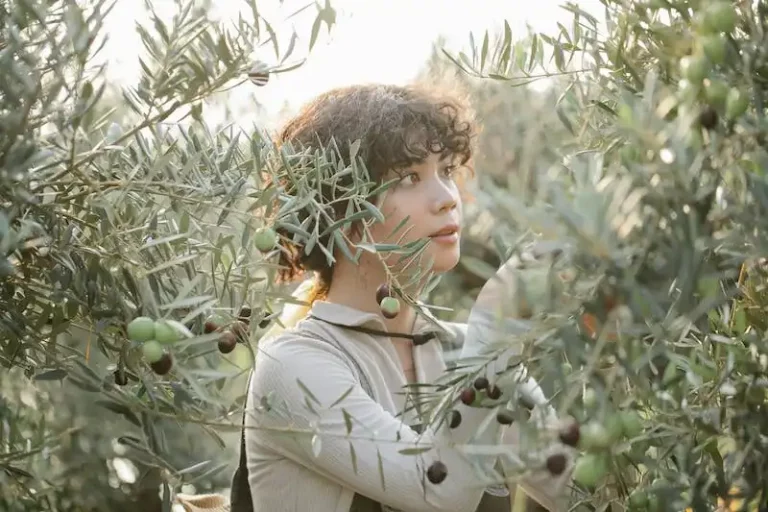Growing your own almond tree can be a rewarding and delicious experience. Almond trees are easy to care for and can provide you with an abundant supply of your favorite snack, right from your own backyard. Whether you live in a warm or colder climate, there are ways to ensure your almond tree thrives and produces the best almonds possible.
When it comes to planting your almond tree, it’s important to choose a well-draining soil that is rich in nutrients. Before planting, make sure to prepare the soil by fertilizing it with phosphorus-rich bonemeal. Almond trees are mostly self-fertile, but having more than one tree can increase the chances of a successful harvest.
Once your almond tree is established, watering becomes crucial, especially during dry summers. Almond trees have a deep root system, so watering deeply and infrequently is the key. Keep an eye out for signs of over-watering or under-watering, such as yellowing leaves or wilting, and adjust your watering schedule accordingly.
Almond trees need to be pruned regularly to maintain shape and encourage growth. Pruning should be done in late winter or early spring, before the tree starts flowering. Dead or damaged branches should be removed, and the tree should be kept to a manageable size for easy harvesting.
Pests can be a concern when growing almond trees. Aphids, mites, and moths are some of the common pests that can infest almond trees. Regularly inspect your tree for any signs of pest infestation and take appropriate measures, such as using organic pesticides or introducing beneficial insects, to keep them at bay.
Cropping and harvesting your almonds can be a quick and satisfying process. Almonds are ready to harvest when the hulls split open, revealing the nut inside. Once harvested, almonds should be dried and stored in a cool, dry place. They can be eaten fresh or used in your favorite recipes.
Almond trees can also be grown in containers if you have limited space or live in an area with harsh winters. In colder states, it’s important to protect the tree from freezing temperatures by wrapping it in burlap or placing a plastic cover around it. Container-grown almond trees should be fertilized regularly and watered more frequently than those planted in the ground.
With the proper care and attention, your almond tree can provide you with a bountiful harvest and a delicious and healthy snack. Whether you’re a seasoned gardener or just starting out, growing your own almonds can be a rewarding and enjoyable experience.
So why not give it a try? Plant your almond tree today and enjoy the fruits of your labor for years to come.
“Gardening is a way of showing that you believe in tomorrow.” – Vassilis Tsitsanis
Almond Lifecycle
Growing an almond tree can be a rewarding experience, and understanding the lifecycle of the tree is an essential guide to successful cultivation. Here is a breakdown of the different stages in the lifecycle of an almond tree:
1. Dormancy: Almond trees have a period of dormancy during the colder months, usually from October to February. During this time, the tree rests and prepares for the upcoming growing season.
2. Blossoms: In late winter or early spring, the almond tree begins to produce beautiful blossoms. These blossoms are not only visually appealing but are also crucial for pollination.
3. Pollination: Almond trees require cross-pollination to produce nuts. Bees or other pollinating insects are helpful in transferring pollen from tree to tree, ensuring a successful harvest.
4. Growth: After pollination, the almond tree starts growing the almonds within the hulls. The tree needs regular watering and fertilizing to support optimal growth. Adequate drainage and nutrient-rich soil are essential for the tree’s health.
5. Pruning: Regular pruning is necessary to maintain the tree’s shape and remove dead or diseased branches. Pruning should be done during the dormant season, ideally in late winter or early spring.
6. Harvest: Almonds are typically harvested once the hulls have dried and split open, revealing the nut inside. Harvest time can vary depending on the almond variety and location but usually occurs between August and October.
7. Processing: Once harvested, the almonds need to be processed. This can involve removing the hulls, drying the nuts, and sorting them for quality. Almonds can be consumed as a snack or used in various culinary uses.
8. Rest and regrowth: After the harvest, the almond tree enters another period of dormancy. This cycle continues year after year, with the tree being pruned, growing almonds, and then resting during dormant seasons.
By understanding the lifecycle of an almond tree, you can provide the necessary care and attention it needs to thrive and produce an abundant harvest of your favorite snack.
If you have any questions about almond tree cultivation or need further guidance, there are many helpful online resources available to assist you.
From orchard to table
Once almond trees are established in orchards, they require regular care and attention to ensure the optimal growing conditions and bountiful harvests. Watering is a crucial aspect of almond tree care, especially during the fruiting season. Almond trees heavily rely on water sources to produce the kernels we love to snack on, but overwatering can also lead to problems such as root rot. Therefore, finding the right balance is key.
During the summers, when temperatures soar and water becomes scarce, almond trees are well-known for their ability to adapt and sustain themselves. Their canopy of green leaves provides shade and helps prevent water loss through transpiration. Almond trees have deep roots that allow them to tap into underground water sources, making them sturdy and drought-tolerant. However, they still require regular watering, especially during dry spells or when they are experiencing heavy fruiting.
Almond trees are mostly self-fertile, meaning they have both male and female blossoms on the same tree. However, they still rely on pollination from bees and other insects to ensure a successful harvest. Almond blossoms bloom in late winters or early springs, and it is during this time that bees play a vital role in transferring pollen from one blossom to another. To attract bees, many almond orchards keep hives nearby or rent beehives. It’s a win-win situation for both bees and almond growers; bees get access to the abundant nectar provided by almond blossoms, and the almond trees receive the necessary pollination for fruit formation.
When almonds start forming, they are protected by a hull, which is a woody outer shell. As the fruit ripens, the hull splits open, revealing the hard shell containing the almond kernel inside. Almond hulls are removed before harvesting, as they can interfere with the drying process and are not palatable to eat. Once the hulls are removed, almonds are ready to be enjoyed as a delicious, nutritious snack or used in a variety of culinary creations.
Almond trees have a natural dormancy period during winters, during which they rest and prepare for the next growing season. It is important to provide them with optimal conditions during dormancy to ensure healthy growth. This includes well-draining soil, protection from extreme cold, and adequate spacing between trees for proper air circulation.
| Factors to consider when growing almond trees: |
|
Almond trees are grown worldwide, with the United States being one of the largest producers. California is particularly popular for almond cultivation due to its favorable climate and abundant water resources. Whether you choose to grow almond trees in your own backyard or enjoy the fruits of these magnificent trees from a local orchard, almonds are a nutritious and tasty snack that can be savored in various forms.
For more information on growing almond trees, including online sources and the availability of different varieties (such as dwarf sizing), consult your local nursery or agricultural extension office.
Almond Tree Growing Your Favorite Snack
If you want to grow your favorite snack, the almond tree, there is a lot of information you need to know. Almond trees sprout from seeds, which you can find within the mature fruit of the almond tree. To complete the planting process, you need to remove the outer shell and store the kernels in containers.
The almond tree, also known by its scientific name Prunus, is a beautiful and productive addition to any garden. The best thing about growing almond trees is that they will later turn into a snack that you can enjoy within your own home!
When growing almond trees, it is important to consider the right location. Almond trees thrive in areas with well-drained soils, so make sure to choose a site with good drainage.
Watering is another crucial aspect of growing almond trees. They need regular watering, especially during the blooming season. Weekly watering should be sufficient, but make sure the soil does not get waterlogged.
Almond trees also require pollination to produce a good crop. It is recommended to plant multiple varieties to ensure cross-pollination, unless you have a self-pollinating variety.
Pruning is important for almond trees, as it helps maintain their shape and encourages strong growth. Prune in late winter or early spring, before the tree starts blooming. Remove any dead or diseased branches, and keep an open center to allow for good air circulation.
Almond trees like to be fed with nitrogen-rich fertilizer, especially in the early spring. This will help promote healthy growth and ensure a good harvest.
Almond trees typically take around 3-5 years to start producing nuts, so be patient. Once the almond tree starts blossoming, it is an exciting time, as you know that your snack is on its way!
When the almonds on the tree are ripe, they will turn yellow and start to crack. It is important to harvest them at the right time to prevent them from falling and potentially being damaged.
If you encounter any issues or have questions about growing almond trees, don’t hesitate to ask a horticultural expert. They can provide valuable advice and troubleshooting tips.
In many parts of Asia, almond trees are heavily grown and are a popular snack. Almonds can be enjoyed shelled or shelled, and they can also be frozen for long-term storage. Almond trees make a beautiful addition to any garden, with their flowering blossoms and tasty nuts.
In conclusion, growing your own almond tree is a rewarding experience. With proper care and attention, you can enjoy your favorite snack straight from your backyard. So why not give it a try and start growing an almond tree today?



